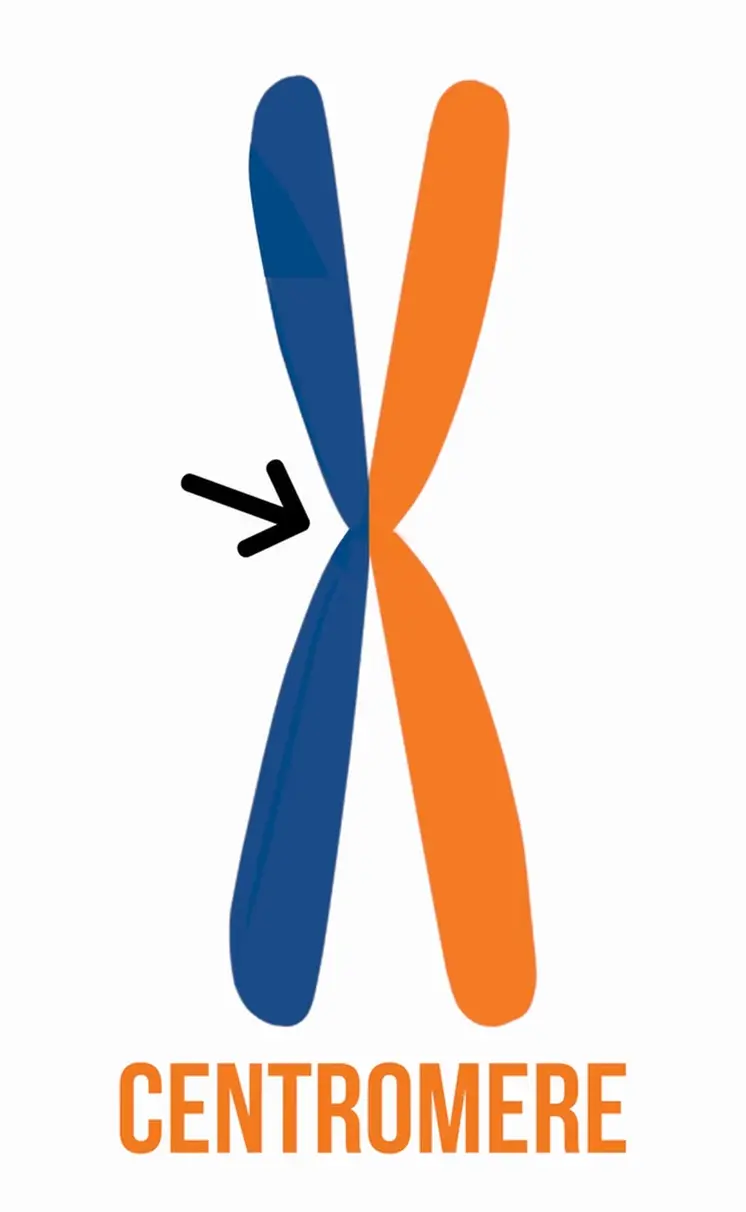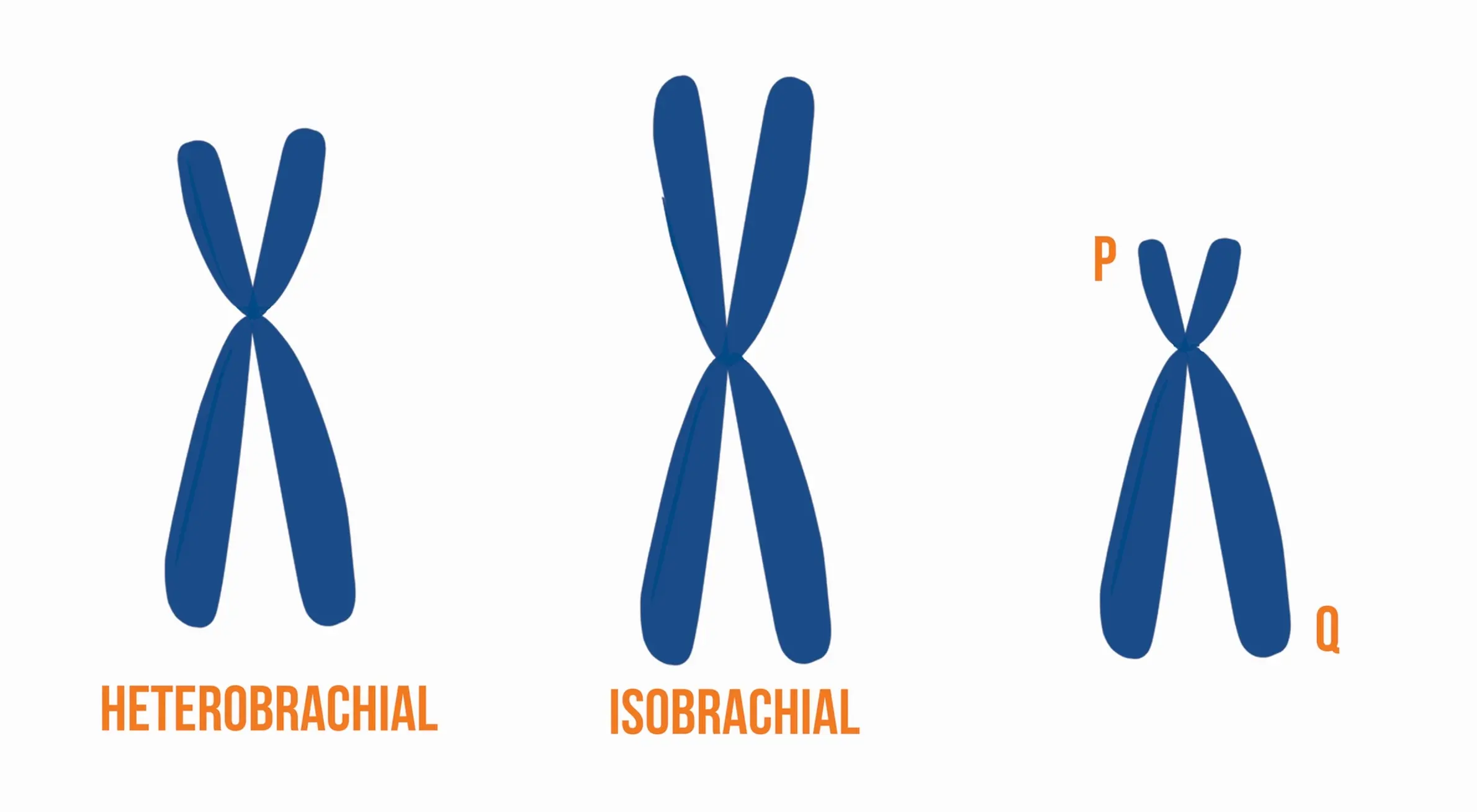
Hey guys! Welcome to this Mometrix video over chromosomes. In our last video, we looked at macromolecules, and were able to see how our bodies are composed.
Chromosomes are threadlike structures made up of dense DNA strands which contain genetic coding and instruction in a sequential composition of genes.
Chromosomes store, replicate, transcribe and transmit genetic data in our body’s cells.
Structure of a Chromosome
A chromosome’s shape and size will vary with the cell’s cycle. When in interphase, the chromosomes are not tightly packed, so they are invisible to the human eye. During cell division, the chromatin begins to condense, by the end of prophase we begin to see well-defined threadlike arrangements materialize called chromonemata.
During metaphase and anaphase, the chromonemata start to completely form and compact together and begin configuring into the structure of chromatids. This cycle of variation in size and shape of the chromosomes during a cell’s cycle is referred to as the chromosomal cycle.
The formation of a chromosome is most clearly observed at metaphase and anaphase, and the reason is because that is when the chromosomes are the most compact (or dense) which makes them easier to see.
A normal chromosome will have these parts:
Centromere
A chromosome in metaphase will have two twin sister chromatids that are connected with one another at a specific point, and this point is called a centromere (also referred to as the primary constriction).

You will also notice that it is the point where the two arms of the chromatids begin to narrow. In anaphase, the centromere separates the sister chromatids into two distinct anaphasic chromosomes.

Consequently, an anaphase chromosome really just a metaphase chromosome cut in half. The narrow structures extending from the centromere are referred to as arms.
Therefore, a chromosome in metaphase will have four arms, while in anaphase, a chromosome will only have two arms. If a chromosome’s two arms are equal it is referred to as an isobrachial chromosome and if the two arms are unequal in length it is referred to as a heterobrachial chromosome. If a chromosome has arms that are not equal, then the shorter arm is classified as ‘p’ and the longer arm is classified as ‘q’.

Chromosomes are given four different names, based upon the position of the centromere
- Telocentric – This means that the centromere is at the very end of the arm of the chromatid. However, you will not see this in humans.
- Acrocentric – This refers to a chromosome with its centromere placed closer the terminal of one end of the arm, resulting in chromosome arms of different sizes.
- Sub-metacentric – This refers to a chromosome whose centromere is located near the middle, but not directly. That the arms are still unequal in length.
- Metacentric – A chromosome with a centromere that is located in the middle, with two seemingly equal chromosome arms.
Types of chromosomes based on the position of the centromere.
The surface of the centromere bears a specialized multi-protein complex called kinetochore to which spindle fibers (microtubules) attach. The centromere of a metaphase chromosome contains 2 kinetochores facing in opposite directions.

Secondary Constrictions
Besides centromeres, a chromosome may have one or more secondary constrictions. The part of the chromosome beyond secondary constriction is called satellite or trabant, which remains attached to the main part of chromosomes by a thread of chromatin.

The chromosome having satellite is called a sat chromosome. There are two types of secondary constrictions: NOR and Joint. They are always constant in their positions and often used as markers. The NOR (nucleolar organizer region) are specialized to produce nucleolus and rRNA. The joints sometimes develop due to breaking and fusion of chromosome segments.
Telomeres
The terminal ends of chromosomes are called telomeres. A telomere is a short repeated DNA sequence (GC-rich) complexed with proteins. They are synthesized separately and later add to the chromosomal tips.
The telomeres help in various ways:
- Provide stability by preventing end fusions of chromosomes,
- Act as initiators of synapsis,
- Shortening of telomeres causes senescence and aging.
Chromomeres
Sometimes along the entire length of interphase chromosomes appear beaded due to the accumulation of chromatin. These bead-like structures are called chromomeres. At metaphase, the chromomeres are tightly coiled and are no longer visible.
Types of Eukaryotic Chromosomes
A Chromosomes
It is the normal invariant set of chromosomes that are diagnostic of the species.
B Chromosomes
These are extra chromosomes, mostly heterochromatic, smaller than normal chromosomes, and exhibit slower replication. They don’t take part in mitosis, segregate randomly, and don’t affect phenotype, though may cause a decrease in vigor. These are not homologous with any of the normal chromosomes. They are derived from autosomes, cause deleterious effects in animals, and, in plants, affect fertility when present in a large amount.
Functions of Chromosomes
- They contain hereditary information in the form of genes and act as hereditary vehicle.
- They control division, growth, metabolism and differentiation in a cell.
- The ploidy of chromosomes determines the expression of gametophyte or sporophyte generation.
- Sex chromosomes determine sex of the individuals.
- Crossing over and aberrations of chromosomes introduce variations in population.
- They transmit hereditary information from generation to generation.
I hope that this video over chromosomes was helpful. Be sure to check out our next video over DNA and RNA.
See you guys next time!